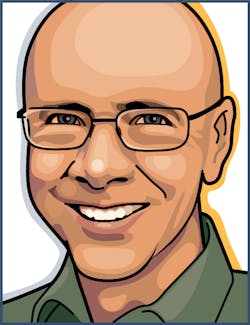High-res 3D optical: A tribute to Mats Gustafsson

Biologists will soon be able to see more in 3D, thanks to the Howard Hughes Medical Institute (HHMI) and the Gordon and Betty Moore Foundation opening the Advanced Imaging Center at HHMI's Janelia Farm Research Campus in Virginia. This facility will include a groundbreaking bioimaging system: the late Mats Gustafsson's multicolor structured illumination microscope (3D-SIM), which delivers live-cell images in 3D.
A memorial to Gustafsson states: "At UCSF, Gustafsson used structured illumination microscopy to visualize the molecular scaffolding that holds the shape of cells. With some adaptations, his team improved the technique's resolution to about 100 nanometers—about 500 times smaller than the average diameter of a cell—and introduced three-dimensional structured illumination microscopy, which made it became possible to see parts of cells that go undetected using most light microscopes. Soon after arriving at Janelia Farm in 2008, Gustafsson further adapted the technique so it could be used in living cells."
The HHMI news release about the Advanced Imaging Center adds: "What sets the 3D-SIM [apart] from commercial systems, however, is its speed at six optical sections/microns/second, making this 3D-SIM system perfectly suited for live-cell applications."
Life scientists can still see results from this microscope at the Gustafsson lab page, which includes images and movies.
Although Gustafsson lost his battle with brain cancer at just 51 years of age, his work opened the path to many life science discoveries ahead. Just imagine what today and tomorrow's biologists will do with 3D-SIM, unveiling 3D structures and processes in living cells at the nanoscale.
About the Author
Mike May
Contributing Editor, BioOptics World
Mike May writes about instrumentation design and application for BioOptics World. He earned his Ph.D. in neurobiology and behavior from Cornell University and is a member of Sigma Xi: The Scientific Research Society. He has written two books and scores of articles in the field of biomedicine.